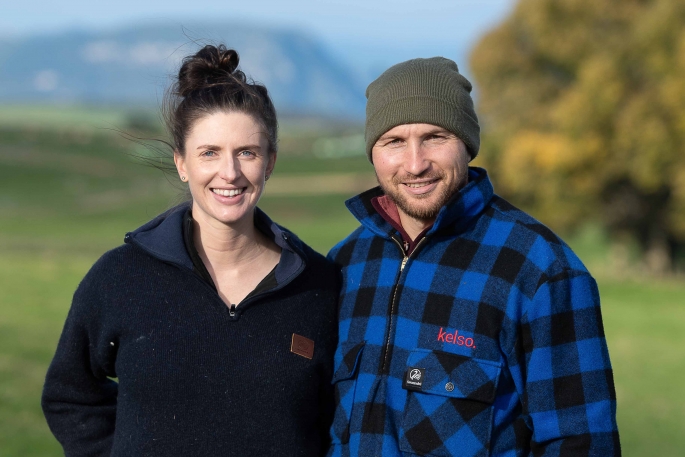Tenacity, determination and good old-fashioned hard work have seen a young couple buy their first farm on the shores of Lake Taupō. The lake could be vulnerable to nitrogen leaching from land uses in the catchment, and in order to maintain water quality farmers need to reduce the amount of nitrogen reaching it from farmland and urban areas by 20 per cent. Landowners in the catchment must prioritise the health of the lake’s water quality which is just what Sean Nixon and Ruby Mulinder are doing. The farm which they bought is 142ha, with 20ha retired and planted out in a mix of Douglas fir and natives. They lease 8ha from their neighbours, balancing out to 130ha effective. They farm 70ha of flat and 60ha hill country, which Ruby says provides an awesome balance for lambing ewes, providing shelter over the early spring period. They winter 1,550 stock units, a mix of sheep and beef and run 670 ewes. As they transition to a sheep-dairy model they are considering the right balance of cattle for the property. Taking a critical thinking approach The couple’s initial focus has been on improving the farm’s pasture quality. Soils are pumice-based, light volcanic, sandy loams with good levels of topsoil. The flat country is cocksfoot and clover dominant with brown top, native grasses and limited clover on the hillsides. They take a critical thinking approach to nutrients and fertility, using OverseerFM for scenario planning. This is particularly important as the Taupō catchment has a nitrogen discharge allowance (NDA), which means both inputs and stocking rates are effectively capped. They are careful to keep their N use low and strategic at 20kg/ha/year on average over the whole farm. “In spring we use a little bit of N to kick us off and bridge the gap between winter and spring,” says Sean. They are mindful of soil acidification and the roll-on impacts of different fertilisers, particularly as they have experienced palatability problems on parts of the farm. “Lime is a key thing that we'll be doing every year, and [monitoring] our potassium levels to grow as much clover as we can,” says Sean. “In a red meat system clover is what makes money … basically the more legumes we can get into our animals, the better our milk and meat production will be.” “Every nutrient we put on we want to be utilised and grow more palatable grass,” says Ruby. “We’re trying to optimise our soil health and not become reliant on nitrogen.” Sean says they’ve been using HawkEye® to order and monitor fertiliser applications and map their farm. “I'm starting to add other features of the farm to the map layers, so if someone's coming in to look after the farm, I can have it marked up nicely on HawkEye rather than the old original farm map from when it was surveyed off.” “It’s an awesome tool … really helpful,” says Ruby. A longer version of this article was originally published in The Ground Effect.



0 Comments
Leave a Comment